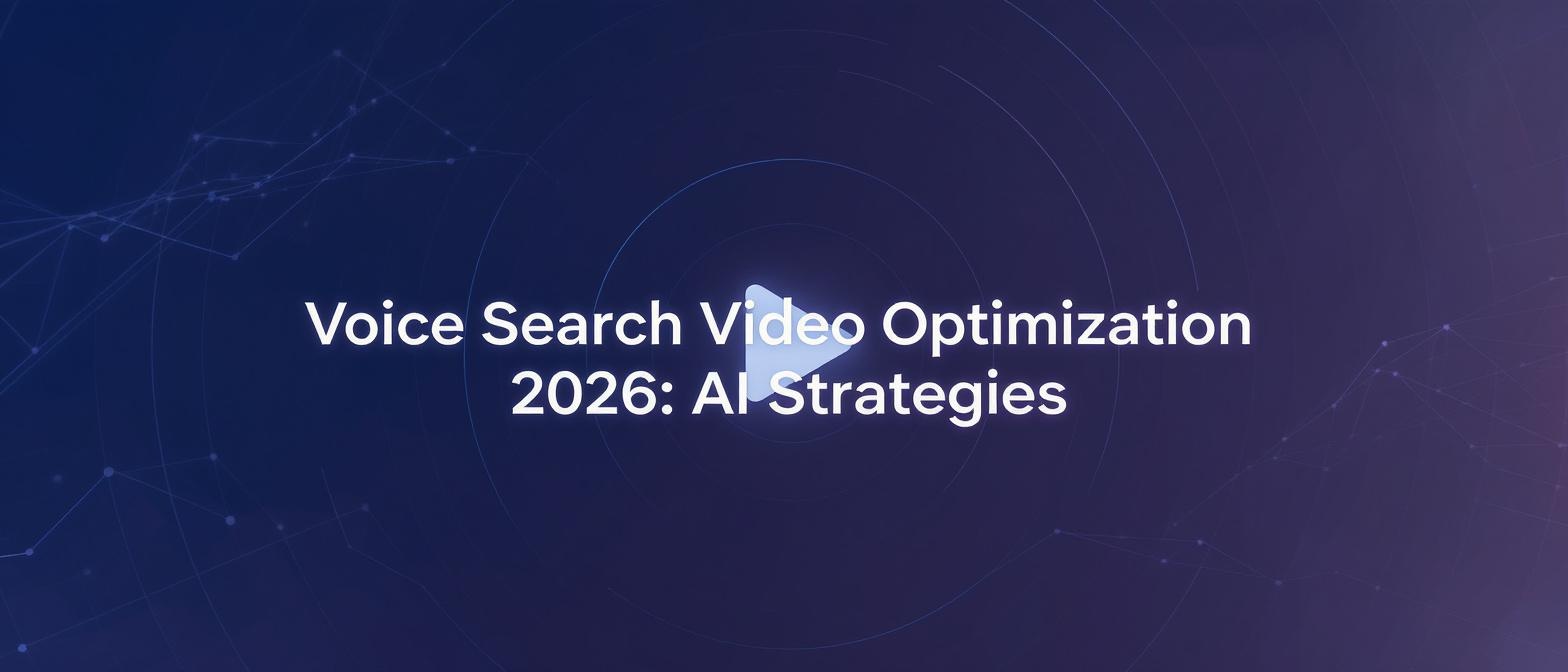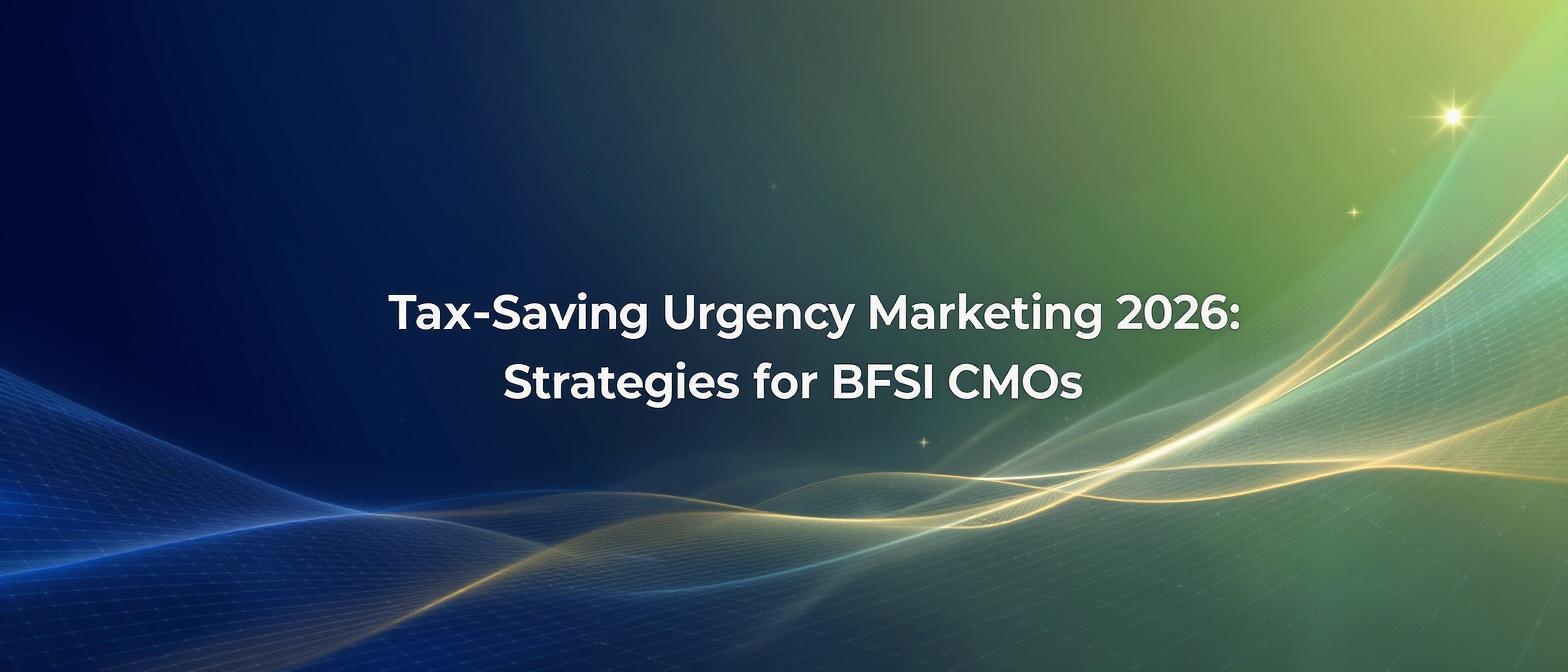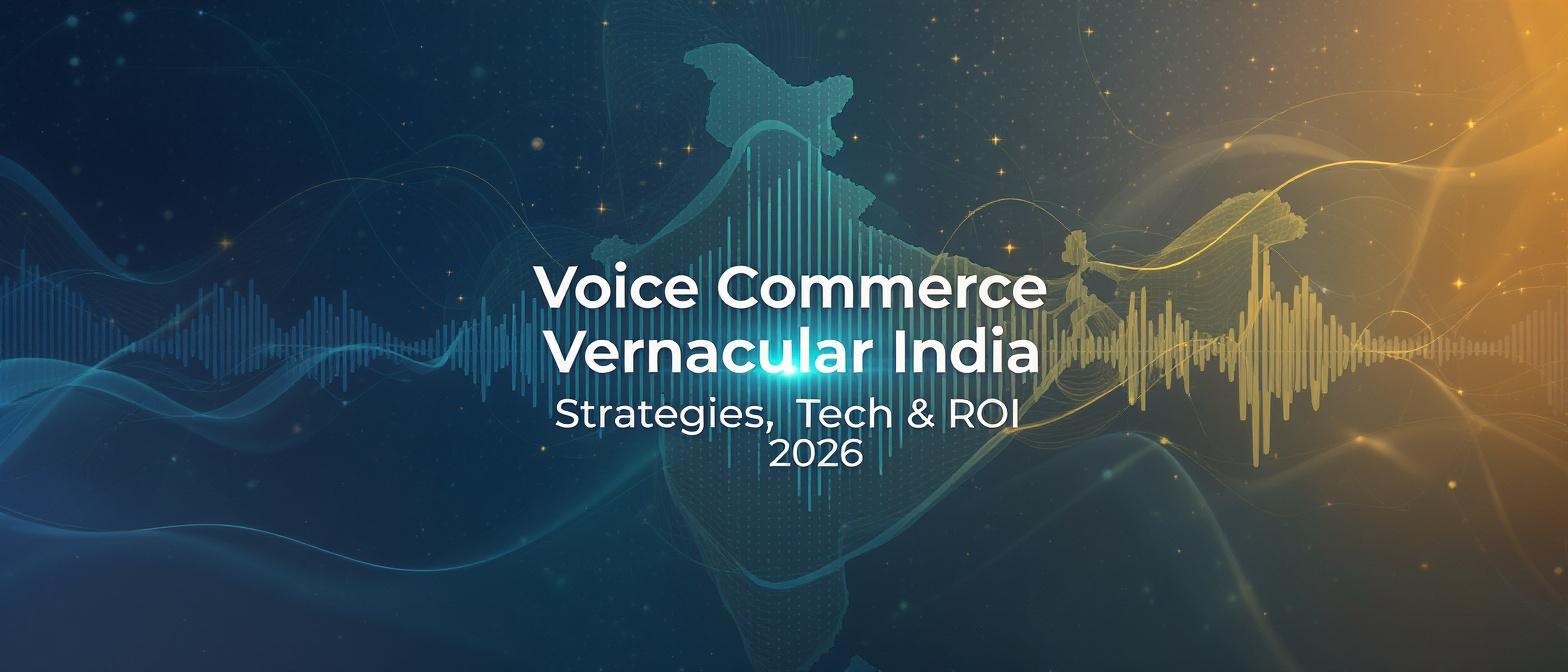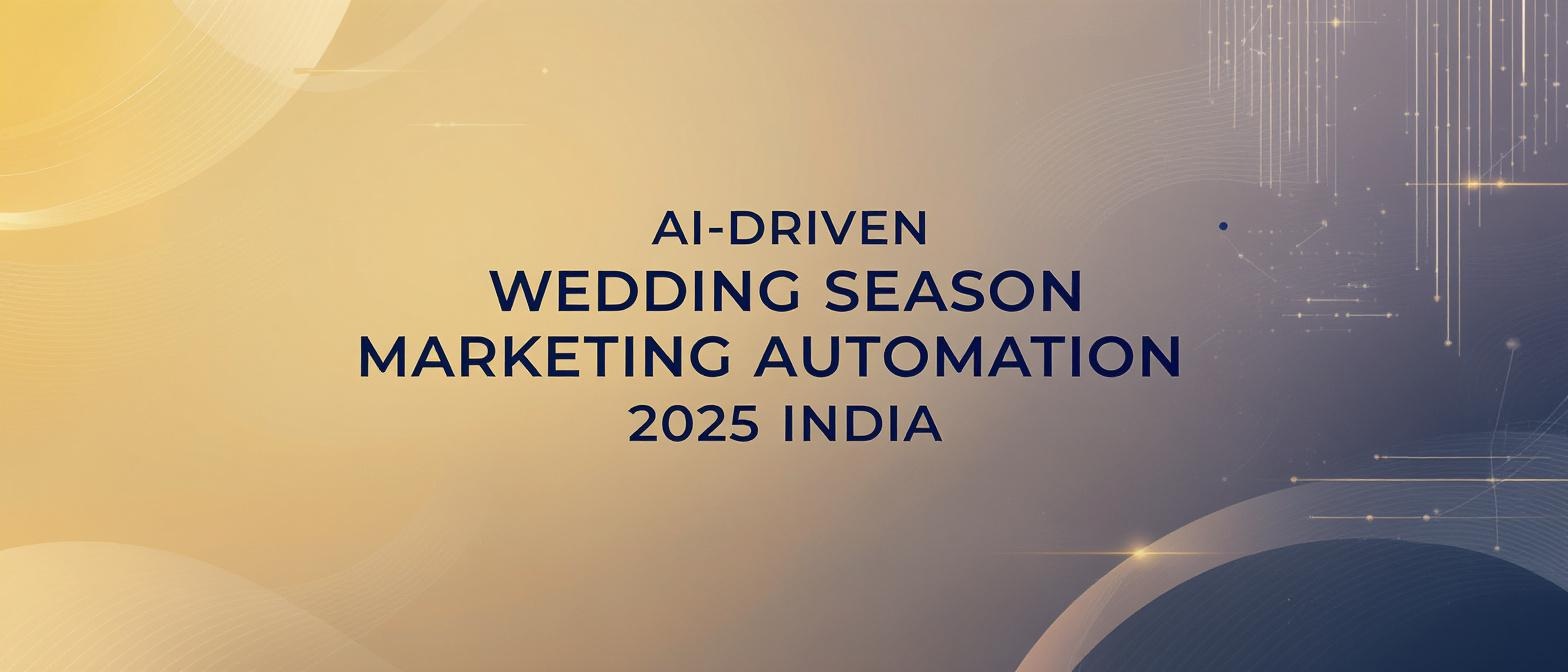Voice Search Video Optimization 2026: AI-Driven, Conversational SEO Strategies for Indian Enterprises
Estimated Reading Time: ~11 minutes
Key Takeaways
- Conversational voice search strategies are essential for the Indian market
- Utilize speakable schema and structured video metadata to rank for spoken queries
- Leverage AI answer engines for voice-driven video discoverability
- Implement hyper-personalized and localized video content at scale
Voice search video optimization 2026 is the critical practice of aligning video content with the conversational, context-rich queries users will pose to AI answer engines. With the imminent shift in search behavior, enterprises must adapt now. Projections show that voice and visual search already account for 20-25% of all queries in India, a figure set to explode as smart assistants and sophisticated AI models fundamentally reshape video discoverability.
This guide provides a comprehensive framework for Indian enterprises to dominate the future of search. We will explore AI-driven strategies, from crafting conversational SEO video content to leveraging speakable schema, ensuring your brand is not just seen but heard. The future of digital interaction is spoken, and optimizing for it begins today.
Source: https://netzens.com/top-10-seo-trends-in-2025-every-marketer-should-know-2/, https://emeritus.org/in/learn/biggest-seo-trends-2025/
Voice Search Video Optimization Trends for 2026
By 2026, the way users search for video content will be fundamentally conversational. Instead of typing fragmented keywords, they will issue longer, natural-language questions to voice assistants. Queries like, “Hey Google, how do I apply voice filters in Premiere Pro?” will become the standard, demanding a new approach to SEO.
This shift underscores two key trends in voice search video optimization 2026. First is the rapid adoption of speakable schema for video markup, which helps search engines identify and extract answer-worthy segments. Second is the strategic move away from optimizing for typed keywords and toward targeting the nuances of conversational queries and understanding voice search intent optimization.
As smart assistants enter every household, the demand for optimizing video content to respond accurately to spoken queries is accelerating. Brands must focus on spoken language video SEO to capture high-intent audiences in their moments of need.
Source: https://www.sitecentre.com.au/blog/voice-search-optimisation, https://redrattlercreative.com/voice-search-optimization-guide/
Crafting Conversational SEO Video Content
Conversational SEO for video involves scripting and producing content that mirrors the natural language and phrasing of spoken user queries. It is about creating a seamless dialogue between a user's question and your video's answer. This strategy requires a fundamental transition from outdated keyword-stuffing tactics to developing authentic, natural language video content.
To execute this, several technical details are crucial. Video scripts should be structured with short, direct sentences and use conversational verbs. A powerful technique is to format videos with FAQ-style chapters, where each chapter addresses a specific long-tail query. Ideally, the answer provided within the first 30 seconds should be around 29 words, a length that aligns perfectly with Google's featured snippet format.
Consider a practical example: a cooking tutorial video. Instead of a generic title, the video could begin with the audible prompt, “Hey Google, show me how to make paneer tikka at home.” The on-screen talent would then immediately respond with, “To make paneer tikka, start by marinating paneer cubes with yogurt and spices…” This direct-response model is optimized for clarity and avoids industry jargon, making it perfect for audio playback by voice assistants and effective for long-tail voice query targeting.
Source: https://searchengineland.com/guide/voice-search, https://www.thegutenberg.com/blog/voice-search-optimization-strategies-for-pr-and-digital-teams/
Mastering AI Answer Engine Video Optimization
AI answer engine video optimization is the process of structuring your video content to be easily digestible for AI systems like Google's Search Generative Experience (SGE) and Bing Chat. These systems are designed to extract and present concise, direct answers from complex content, including videos, ensuring your brand provides the definitive answer.
Success hinges on meticulous technical tactics. The first step is to optimize all video metadata—including the title, description, and, most importantly, the transcript—with Schema.org’s VideoObject markup. This provides critical context that AI systems use to understand the video’s content and structure. A recent analysis from 2025 shows that videos with comprehensive schema are 40% more likely to be featured in rich results.
Beyond basic metadata, advanced strategies involve flagging timestamped “speakable” segments directly within the video transcript. This markup explicitly tells AI engines which specific clips contain answers to potential queries. Placing clear, concise answers within the first 30 seconds of the video dramatically increases the likelihood of extraction.
Source: https://redrattlercreative.com/voice-search-optimization-guide/, https://searchengineland.com/guide/voice-search
Voice Assistant Video Integration & Voice Query Video Marketing
The next frontier of video engagement lies in direct integration with voice assistants like Alexa and Google Assistant. Voice assistant video integration allows users to discover and play your content through simple voice commands, creating a frictionless and highly accessible brand experience. The workflow involves embedding VideoObject schema within an Action (for Google Assistant) or a Skill (for Alexa) and defining specific utterance patterns.
This enables powerful, personalized use cases. For instance, a fitness app could respond to “Hey Google, show my daily stretch video” by playing a user’s customized routine. In e-commerce, a customer could ask, “Alexa, play my order status video from BigBasket,” and receive a real-time, personalized video update. This level of voice query video marketing transforms passive content into an interactive service.
The benefits are substantial: hands-free content access improves convenience, enhanced accessibility serves visually impaired users, and direct interaction creates more memorable brand moments. By 2026, it is projected that over 50% of smart speaker owners will use them to interact with brands daily. Platforms like TrueFan AI enable the creation of the dynamic, personalized video content required to power these advanced integrations at scale.
Source: https://marketing.com.au/voice-seo-search-optimisation-what-you-need-to-know-in-2026/, https://www.thegutenberg.com/blog/voice-search-optimization-strategies-for-pr-and-digital-teams/
Strategic Use of Speakable Schema for Voice Search Intent Optimization
Speakable schema video markup is a powerful tool that explicitly flags answer-focused sections within your content for voice assistants. Implementing it correctly is a cornerstone of advanced voice search intent optimization, ensuring your video content is surfaced as a direct spoken answer.
The implementation process involves three core steps:
- Generate Detailed Transcripts: Create a precise, word-for-word transcript of your video content. Accuracy is paramount for the schema to function correctly.
- Mark Up Q&A Segments: Within the transcript, identify the key question-and-answer segments. Wrap these specific sections with <speakable> schema using JSON-LD format in your page’s HTML.
- Validate with Rich Results Test: Use Google’s Rich Results Test tool to validate your markup. This ensures there are no errors and that search engines can correctly parse the speakable data.
Beyond implementation, you must map your video chapters to common user intents. Align content to informational intent (“How to…?”), transactional intent (“Where can I buy…?”), and navigational intent (“Play the latest…”). By marking up these intent-aligned segments, you significantly boost discoverability and position your brand as the authoritative source for spoken answers.
Source: https://netzens.com/top-10-seo-trends-in-2025-every-marketer-should-know-2/, https://simplybefound.com/voice-search-marketing-guide-for-2026/
Long-Tail Voice Query Targeting & Voice Commerce Video Content
Long-tail voice query targeting is a sophisticated strategy focused on capturing highly specific, niche spoken queries that indicate strong user intent. Instead of broad terms, this approach targets phrases like, “What’s the best vegan burger near me under ₹300 that offers delivery?” These queries often come from users who are further down the conversion funnel.
The technical approach requires data analysis and content atomization. Enterprises should analyze smart speaker logs and search query data to identify frequently asked question patterns. Based on this data, you can create a library of micro-videos (10–15 seconds each) that provide direct, specific answers to each of these long-tail questions.
This strategy seamlessly integrates with voice commerce video content. For instance, a video answering a product query can embed a “Buy Now” voice card, allowing users to make a one-click purchase directly from the video player using a voice command. Dynamic overlays can further prompt action with calls-to-action like, “Say ‘Yes’ to add this to your cart.” As of 2025, voice shopping is projected to become a $40 billion market, making this integration a critical revenue driver.
Source: https://redrattlercreative.com/voice-search-optimization-guide/, https://www.invoca.com/blog/voice-search-stats-marketers
Multilingual Voice SEO Strategies for the Indian Market
India's immense linguistic diversity, with 22 official languages and over 1,600 dialects, makes a one-language-fits-all approach to SEO obsolete. A successful multilingual voice SEO India strategy requires deep cultural and linguistic nuance to create conversational SEO video content that truly resonates. The goal is not just translation but authentic localization.
Best practices for spoken language video SEO in India are multifaceted. Video scripts must be localized into major regional languages like Hindi, Tamil, Bengali, and Marathi, with careful attention to retaining native pronunciation and colloquialisms. A user in Chennai is more likely to search in Tamil with a regional accent, and your content must be optimized to match.
Furthermore, technical metadata, especially transcripts, should incorporate phonetic variations. For example, a transcript should account for users saying both “Delhi” and the more common vernacular “Dilli.” Data shows that video SEO in India must cater to mobile-first, multilingual audiences, where voice queries are projected to exceed 30% of all mobile searches by 2026. Leveraging TrueFan AI’s 175+ language support and Personalised Celebrity Videos can bridge this gap, delivering localized content with perfect pronunciation and cultural relevance at scale.
Source: https://emeritus.org/in/learn/biggest-seo-trends-2025/, https://www.thegutenberg.com/blog/voice-search-optimization-strategies-for-pr-and-digital-teams/
Leveraging AI for Enterprise Voice Search Video Optimization
To execute voice search video optimization 2026 at an enterprise level, brands need advanced generative AI capabilities that deliver hyper-personalization, multilingual localization, and measurable ROI. This is where cutting-edge AI platforms provide a decisive competitive advantage.
Hyper-Personalization at Scale
Modern AI systems utilize API-driven templates to dynamically insert viewer details—such as their name, location, or recent purchase—directly into a video’s speech and on-screen text. Imagine a video where a brand ambassador says, “Hi Arjun from Mumbai, here’s 20% off your next Hero bike service.” This level of one-to-one communication transforms a generic ad into a personal invitation.
Virtual Reshoots & AI Editing
A revolutionary capability is the “virtual reshoot.” AI-powered lip-sync technology allows brands to update single lines of dialogue across millions of videos without needing the original talent for a new shoot. This agility is invaluable for A/B testing offers or updating campaign messaging. The TrueFan Enterprise Document reports that this technology has already saved partners an astonishing 3,888 production hours.
Multilingual Localization and Real-Time Delivery
Top-tier platforms can instantly generate video variants in over 175 languages, all while maintaining the original speaker’s voice and ensuring perfect lip-sync. This is crucial for connecting with diverse audiences in markets like India. Combined with sub-30-second render-to-delivery pipelines, personalized videos can be triggered in real-time for microsites, emails, and even digital signage, enabling powerful voice assistant video integration.
Analytics, ROI, and Compliance
Solutions like TrueFan AI demonstrate ROI through detailed analytics dashboards. These tools measure watch rates and engagement lifts, revealing insights such as the powerful impact of a celebrity mentioning a user’s name within the first five seconds. This data-driven optimization is backed by robust security and compliance, including ISO 27001 and SOC 2 certifications and a consent-first model for all celebrity usage, ensuring enterprise-grade safety.
Conclusion & Future Outlook
The paradigm of digital discovery is shifting from fingertips to spoken words. For Indian enterprises, mastering voice search video optimization 2026 is not an option but an imperative for survival and growth. The convergence of conversational AI, semantic search, and user demand for frictionless experiences has created a new competitive battleground where the most natural, helpful, and accessible content will win.
To thrive, brands must pivot their strategies now. This involves embracing conversational SEO video content, meticulously implementing speakable schema video markup, and optimizing for AI answer engine video optimization. Furthermore, tapping into the power of multilingual voice SEO in India is critical to connect with a diverse and mobile-first audience. The future belongs to those who can speak their customers’ language—literally.
The journey to voice search dominance requires a partner with the technology to execute at scale. We invite you to partner with TrueFan to implement an end-to-end voice search video optimization strategy. Leverage our hyper-personalized, multilingual, and AI-powered platform to not only meet the future of search but define it.
Frequently Asked Questions
What is voice search video optimization?
Voice search video optimization is the process of creating, formatting, and marking up video content so it can be easily found and understood by voice assistants and AI answer engines. It focuses on conversational language, direct answers to questions, and technical SEO elements like speakable schema to rank for spoken queries.
Why is long-tail voice query targeting important for 2026?
By 2026, voice queries will be longer and more specific than typed searches. Targeting these long-tail queries (e.g., “best noise-canceling headphones under ₹15,000 for office use”) allows brands to capture users with very high purchase intent, leading to higher conversion rates and better ROI on content creation.
How does speakable schema help in voice search?
Speakable schema is a type of markup that identifies specific sections of your content (like a video transcript) that are best suited for being read aloud by a voice assistant. It essentially tells search engines, “This is the direct answer to a user’s question,” significantly increasing the chances of your video being used as a spoken result.
What is the role of AI in conversational video content?
AI is crucial for scaling conversational video strategies. Generative AI platforms like TrueFan AI can create thousands or even millions of hyper-personalized video variations where a brand ambassador addresses each user by name, references their location, or mentions a recent interaction. This allows brands to create a one-to-one conversational experience that would be impossible to produce manually.
How do I optimize video content for multilingual voice search in India?
Start by identifying the primary languages of your target regions. Localize your video scripts and transcripts into these languages, paying close attention to regional dialects, accents, and phonetic spellings (e.g., optimizing for both “Mumbai” and “Bombay”). Use multilingual metadata and consider creating separate video versions for key linguistic markets to ensure maximum relevance.
Can voice search optimization improve my video’s performance in traditional search?
Absolutely. The principles of voice search optimization—clear and concise answers, well-structured content, detailed metadata, and mobile-first design—are all best practices for traditional SEO. Optimizing for voice makes your content more accessible and useful, which search engines like Google reward with higher rankings across all search modalities.





